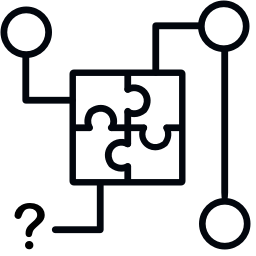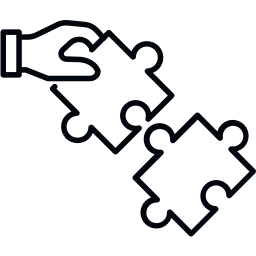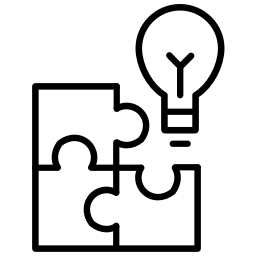YOU ARE VIEWING A DEMO REPORT
Beth Person

Toolkit: Improving Communication with Me
Law School Transparency
Introduction 00
Back to Table of ContentsThis report is designed to help other people improve communications with you. Your personalized report contains the following chapters:
Who Am I?: A quick snapshot view into who this person is.
How to Talk to Me: Specific tips on how to better communicate and talk with this person.
Essential Motivator: This person's core psychological needs, values, and talents
Communication Quick Tips: Advice for effective communication with this person based on their essential motivator.
Barriers & Challenges to Success: Situations or personality features that might get in the way of successful professional interactions with this person.
Motivating Words: Word choices than have help you have more effective interactions with this person.
Interaction Style: How this person tends to express themselves to others.
Interaction Mistakes to Avoid: How to avoid or deescalate difficult situations with this person.
01 Who Am I? - Expanded
Back to Table of ContentsA quick snapshot view into who a person is.
- I am Independent
- I am Theoretical
- I am Logical
- I am Curious
Top 6 Things I Enjoy
I enjoy...
- ...being a problem solver
- ...giving advice when it is asked for
- ...thinking creatively
- ...working on complex projects
- ...being in control of my plan for the day
- ...receiving recognition for competence
9 Things I Am Good At
I am good at...
- ...playing with ideas in my head
- ...thinking about possible solutions from every angle
- ...working independently
- ...weighing up the pros and cons
- ...respecting others' need for privacy
- ...thinking “outside the square”
- ...keeping calm in a crisis
- ...challenging myself
- ...analyzing and theorizing
6 Things That May Cause Me To Get Upset
I may get upset when...
- ...I'm being hurried for a solution
- ...my confidence is under-valued
- ...nothing is interesting
- ...I’m forced into social situations that are uninteresting or too long
- ...people are sweating the small stuff
- ...I have to listen to trivial detail
The Top 7 Things I May Need Help With
I may need help with...
- ...communicating my thoughts simply and coherently
- ...being tactful
- ...accepting traditions that seem senseless
- ...being patient
- ...expressing empathy and concern
- ...working out my feelings and sharing them
- ...overcoming failures
My #1 Focus Is Mostly
Exploring and analyzing possibilities to solve problems
02 How to Talk to Me
Back to Table of ContentsSpecific tips on how to better communicate and talk with each person
How to talk to Beth:

Logical & Ingenious
”Let’s change the system”
Motivating Words
- Develop
- criticize
- theorize
- conceptualize
Beth responds best to communication when you:
-
Present the vision
Start by telling about the vision and what Beth’s intellectual contribution to advance the vision is or could be. Present options.
-
Focus on competence
Establish credibility quickly. Be convincing. Recognize theoretical knowledge and competence. Remember that focus on problem solving is important.
-
Describe the big picture
Talk about concepts and themes and clarify correlations and context. Avoid too many details unless Beth requests this.
-
Focus on the long-term perspective
Be future-oriented. Talk about the opportunities for strategic progress and improvement of the current structures – especially in the long run.
-
Be open
Acknowledge proposals about new and different ways of doing things. Try not to reject ideas too fast. Give autonomy. Ask open-ended questions.
-
Debate ideas and analyses
Present exciting challenges to conquer. View questions and critique as a contribution to a better analysis and a better strategy. Be prepared to argue. Beth appreciates a good debate.
-
Be direct
Be objective, systematic, logical, analytical and straightforward in your communication. Do not soften your message. Tell it like it is.
-
Acknowledge ideas and accomplishments
Appreciate Beth’s ability to think outside the box and challenge the existing notions. Acknowledge results and “intellectual mastery”.
Original work by: Mette Babitzkow Boje Tina Brøndum Kristjánsson © Step Research Corporation
03 Essential Motivator - Expanded
Back to Table of ContentsEssential Motivators, your core psychological needs, values and talents as described by Linda Berens
Theorist
Beth’s Essential Motivator
Businesses are built on scientific discoveries and innovations.
Theory is the means to understanding the objective truth on which to build a path to achievement.
- Beth prefers using her gifts of strategic analysis to approach all situations
- She constantly examines the relationship of the means to the overall vision and goal
- No stranger to complexity, theories, and models, Beth likes to think of all possible contingencies and develop multiple plans for handling them
- She abstractly analyzes a situation and considers previously unthought-of possibilities
- Researching, analyzing, searching for patterns, and developing hypotheses are quite likely to be Beth's natural modus operandi.
Goals
Competence
Stressors
Powerlessness
Incompetence
Lack of knowledge
Theorist
Beth wants knowledge and to be competent, to achieve mastery. Beth seeks expertise to understand how the world and things in it work. She is theory oriented. Beth sees everything as conditional and relative. She is oriented to the infinite. She trusts logic and reason. She wants to have a rationale for everything. She is skeptical. Beth thinks in terms of differences, delineating categories, definitions, structures, and functions. She has a hunger for precision, especially in thought and language. Usually Beth is skilled at long-range planning, inventing, designing, and defining. Generally she is calm. Beth fosters individualism. She frequently gravitates toward technology and the sciences. She tends to be well suited for engineering and devising strategy, whether in the social sciences or physical sciences.
Needs & Values
Beth's core needs are for mastery of concepts, knowledge, and competence. She wants to understand the operating principles of the universe and to learn or even develop theories for everything. Beth values expertise, logical consistency, concepts, and ideas and seeks progress. She tends toward pragmatic, utilitarian actions with a technology focus. She trusts logic above all else. Beth tends to be skeptical and highly value precision in language. Beth's learning style is conceptual, and she wants to know the underlying principles that generate the details and facts rather than the details alone.
Skill Set
- Strategic Skill Set
- Think of and explain all the possible contingencies and influencing factors and then design processes for achieving the objectives
- Abstractly analyze a situation and consider previously unthought-of possibilities
- Look at the relationships between the goals and the means for unintended consequences
- Identify ways to improve and make progress relative to long-term goals
- Integrate ideas into cohesive theories and design processes that strategically meet the wants and needs of others
- Implement a vision of the future—conceiving of a way to be in the future as well as the action steps needed to get there
- Generate and share a multitude of ideas and possibilities for action
- Mobilize and coordinate the actions of others to implement a strategy
04 Communication Quick Tips
Back to Table of ContentsCommunication tips based on a person's Essential Motivators
Ways to Maximize Communication with Beth
More Likely Beth
Less Beth
Theorist
Beth Prefers People To:
- Focus on the big picture
- Describe the outcome you want, but don’t say how to achieve it
- Demonstrate logical consistency
- Appeal to an interest in research or inventing something new
Less Likely Beth
Catalyst
- Start with the vision and big picture
- Foster a friendship
- Show how the idea supports others
- Appeal to Beth's values
Improviser
- Get to the point about what’s needed and why
- Offer choices
- Tie concepts to practical applications and give specific examples
- Focus on near term deadlines
Stabilizer
- Start with specifics
- Link to demonstrated successes of a similar nature
- Show how it will reduce risk
- Address every concern
05 Barriers & Challenges to Success
Back to Table of ContentsWhat are several key barriers and challenges to success that are likely to recur during life for this person.
Barriers & Challenges
- Beth typically has a strong need for privacy, an intense interest in just a few areas, and a dislike of small talk, which may make Beth appear distant, anti-social, or confusing to her peers.
- She may be impatient with those who are less capable.
- Beth may walk away from situations she sees as unjust, unfair, illogical, or not relevant to her.
- If pushed Beth may also challenge authority for the same reasons.
- Managing time, deadlines and completion are often problematic.
- Concentrating on theory she may miss the important details.
- Beth can appear compliant whilst ignoring what she sees as stupid rules.
Original work by: Sue Blair Mary Anne Sutherland © Step Research Corporation
06 Motivating Words
Back to Table of ContentsDifferent groups of motivating words that trigger the best environment for taking in information.
Preferred Motivated Words
Based on preferences for taking in information.
More Likely Beth
 Question & Connection
Question & Connection
- Create
- discover
- pretend
- design
- develop
- discuss
- synthesize
- collaborate
- find a new…
- generate
- visualize
- evaluate
- problem-solve
- experiment
- invent
- hypothesize
Less Likely Beth
 Experience & Movement
Experience & Movement
- Build
- show
- assemble
- tell
- discover
- make
- demonstrate
- figure out
- touch
- design
- suggest
- solve
- choose
- construct
- examine
- explore
- discuss
 Vision & Interpretation
Vision & Interpretation
- Read
- think
- consider
- design
- evaluate
- clarify
- speculate
- dream
- envision
- paraphrase
- brainstorm
- create
- elaborate
- illustrate
- write
- reflect
- chew on
- make connections
- compare
- contrast
- compose
Least Likely Beth
 Structure & Certainty
Structure & Certainty
- Read
- identify
- list
- label
- name
- notice
- observe
- apply
- analyze
- graph
- examine
- work
- prepare
- do
- organize
- complete
- answer
- listen
07 Interaction Style - Expanded
Back to Table of ContentsHow you tend to express yourself to others.
Synthesizer - Behind-the-Scenes
Beth’s Interaction Style
- Quiet
- Agreeable
- Friendly
- Approachable
- Unassuming
- Accommodating
- Conscientious
- Patient
Goals
To get the needed or wanted results
To integrate and harmonize
Stressors
Not enough input or credit
Pressed to decide too quickly
- Do what it takes to get the best result possible
- See value in contributions from many people or information sources
- Support the group's process by allowing for digressions then refocusing on the desired outcome
- Reconcile many voices in the communication of the vision
- Make consultative decisions, integrating many sources of input
- Focus on understanding the process to get a high-quality outcome
- Aim to produce the best products and results
- Support others as they do their work
- Define specifications to meet standards and apply principles
- Clarify values and intentions
Synthesizer - Behind-the-Scenes
Beth's theme is getting the best result possible. She focuses on understanding and working with the process to create a positive outcome. Beth sees value in many contributions and consults outside inputs to make an informed decision. Beth aims to integrate various information sources and accommodates differing points of view. She approaches others with a quiet, calm style that may not show her strong convictions. Producing, sustaining, defining, and clarifying are all ways she supports a group's process. Beth typically has more patience than most with the time it takes to gain support through consensus for a project or to refine the result.
08 Interaction Mistakes to Avoid
Back to Table of ContentsWhat to avoid when interacting with this person.
Interaction Don'ts
More Likely Beth
Less Likely Beth
Synthesizer
Behind-the-Scenes™
Things to Avoid When With Beth:
- Beth prefers communication that doesn't pressure her to make an immediate decision
- Avoid interrupting her
- Telling Beth what to do without consulting her is irritating to her
- Don't assume Beth has nothing to say just because she isn't talking
- Don't overpower her with your style
Less Beth
Navigator
Chart-the-Course™
- Beth dislikes changing the plan or rushing ahead with no plan
- Refrain from getting side tracked in interactions with Beth
- Avoid invading her space
- Stay away from too much small talk
- When doing something with Beth, don't jump in without thinking things through
Energizer
Get-Things-Going™
- Avoid saying nothing or being non-committal to Beth
- Stay away from criticizing her ideas before you have given positive feedback
- Don't show reluctance to participate with Beth
- Beth prefers communication that doesn't go too slowly or get stuck on details
- Telling Beth what to do without involving her is irritating to her
Mobilizer
In-Charge™
- In working with Beth, avoid a lot of discussion without action
- Beth prefers not too much talking
- Don't go off the point
- Avoid making small talk before the task has been dealt with
- Stay away from competition with her
Original work by: Catherine Stothart © Step Research Corporation